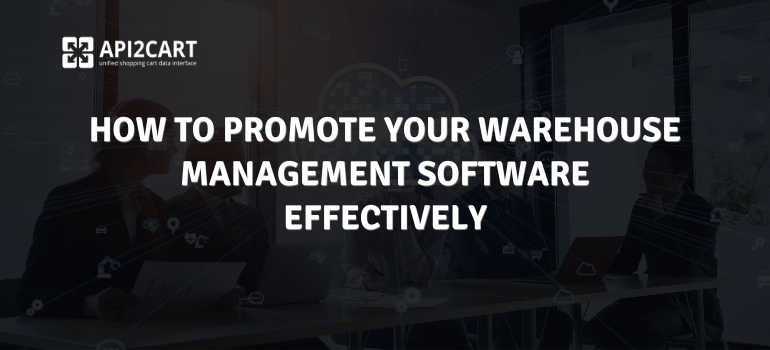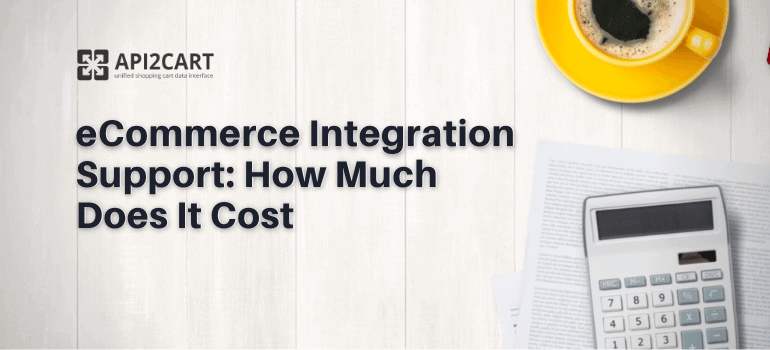
A warehouse management system (WMS) is software designed to oversee and manage daily warehouse operations, including inventory management, picking, packing, and shipping, with the objective of maximizing efficiency.
If you provide a WMS, promoting its best service offerings to prospective and current customers can lead to growth for your company. By promoting your strongest traits, your warehouse software can gain an edge over other distributors fighting for the same customers while you are focused on increasing sales and customer satisfaction.
In this article, you will find many useful tips on how to promote your WMS in the eCommerce market and make your company more successful.
The Principles of eCommerce WMS Working?
The first step to the successful promotion of your WMS is to understand the principles of eCommerce and how it works. By understanding the basics, you can ensure that you are marketing your software effectively to the right customers. eCommerce can be broken down into four basic steps: identification of customer needs, product selection, payment processing, and fulfillment.
Identification of customer needs involves understanding what potential customers are looking for in a warehouse management system. Are there certain features they need? Are there certain pricing models they prefer? Knowing this information will help you craft a more effective promotional campaign tailored to their specific requirements.
Product selection includes researching the available options on the market and selecting the one that best meets your customers’ needs. Your WMS should be able to provide an efficient, user-friendly experience and support a wide range of product types.
Payment processing involves setting up payment methods that are secure and convenient for customers to use. This includes processing credit cards, PayPal, and other payment options. Additionally, make sure your system is compliant with all applicable laws and regulations related to online payments.
Fulfillment involves making sure orders are shipped on time and in good condition. This includes ensuring your WMS has the necessary features to track orders and shipments, so you can quickly resolve any problems that may arise during the process.
What are The Main Features of High-Quality Warehouse Management Software?
Warehouse management system software is a vital tool in the retail and manufacturing industries as it helps to increase operational efficiency. It is used to streamline the storage, movement, and tracking of stock that comes into or leaves a warehouse. With a type of software like yours, organizations can accurately monitor materials and goods as they come in and go out. This means that businesses can keep better track of inventory in a more timely and efficient manner.
Furthermore, warehouse management systems help to optimize how workers receive, inspect, pick, store, and pack orders for shipping. In addition to helping managers plan ahead with respect to supplies needed for projected order volume, this type of software also assists in decreasing labor hours by automating processes such as order picking or generating shipping documents. By utilizing features such as automated data capture paired with mobile computers, instructions for picking orders can be tailored for each employee based on their level of experience and skill set.
What are the Difficulties WMS Company May Face With?
WMS companies face a number of difficulties in the competitive market, including the need to increase their customer base, stand out among competitors, and overcome technical complexity. The time-consuming and expensive process of developing integration with different eCommerce platforms and marketplaces also poses a challenge for these businesses.
- The need to increase the number of prospective clients of your WMS solution
In today’s competitive software market, it is essential for businesses to increase their customer base and gain an edge over their competitors. One way to do this is by promoting your WMS on the eCommerce market.
- The need to stand out your warehouse management software among the competitors
In today’s market, there is a multitude of warehouse management software available to businesses. Because of the prevalence, it is important that your own warehouse management software stands out from the competition.
- The need to develop the integration between your warehouse management software and eCommerce platforms
It is crucial to integrate your WMS with different eCommerce platforms, including Shopify, WooCommerce, Magento, Wix, and so on. Integrating your warehouse management software with these platforms will enable customers to access it from their preferred platforms.
How to Effectively Promote Your Warehouse Software?
Promoting your warehouse management software effectively is key to gaining the attention of potential customers and increasing sales. Here are a few tips for effectively promoting your WMS:
1. Utilize Social Media - Creating an active presence on social media platforms such as Twitter, LinkedIn, and Facebook can help you reach larger audiences and engage with prospective customers in real time. Use these platforms to share informative content about your product, including features, benefits, and customer success stories. Additionally, create ads for target audiences that specifically focus on the advantages of using your WMS solution.
2. Leverage Influencer Marketing – Connecting with influencers in the industry who have an engaged following can be beneficial to your marketing efforts. You can use influencers to share content about your WMS, such as tutorials, product reviews, and customer testimonials.
3. Participate in Trade Shows – Attending trade shows is an excellent way to expose your brand and product to more people. These events give you the opportunity to meet other professionals in the industry, build relationships with potential customers, and demonstrate how your WMS solution can be beneficial for their business.
4. Develop Partnerships – Developing strategic partnerships with complementary companies will help you increase the visibility of your WMS solution. Reach out to companies who have a similar target market as yours and form a mutually beneficial alliance where both parties benefit from the partnership.
5. Invest in SEO – Search engine optimization (SEO) is an important part of any effective marketing strategy. By optimizing your website and content for targeted keywords, you can increase your ranking in search engine results. This will lead to increased visibility and more organic traffic to your website.
6. Integrate with eCommerce Platforms Fast – Integrating your WMS with existing eCommerce platforms is essential for success in the eCommerce market. It allows you to expand your potential client base by providing access to thousands of merchants seeking solutions like yours.
How to Integrate Your WMS with eCommerce Platforms?
API2Cart is a unified API solution that simplifies the process of integrating your warehouse management software with multiple eCommerce platforms, including Shopify, Magento, WooCommerce, and BigCommerce.
API2Cart is an essential tool for any business looking to promote their warehouse management software effectively. It enables businesses to quickly and painlessly connect their software with multiple eCommerce platforms, allowing them to synchronize data in real time between the two systems. This eliminates manual processes, improves efficiency, reduces errors, and ultimately saves time and money.
API2Cart provides a large number of supported API methods that can help you work efficiently on the market, gain access to all the data you need from your clients' e-stores, and automate your tasks. For example, your WMS will be able to get and manage data on orders, products, prices, etc.
Sign up for a free trial account and test API2Cart's functionality to see how it can help you integrate your WMS with multiple eCommerce platforms.



